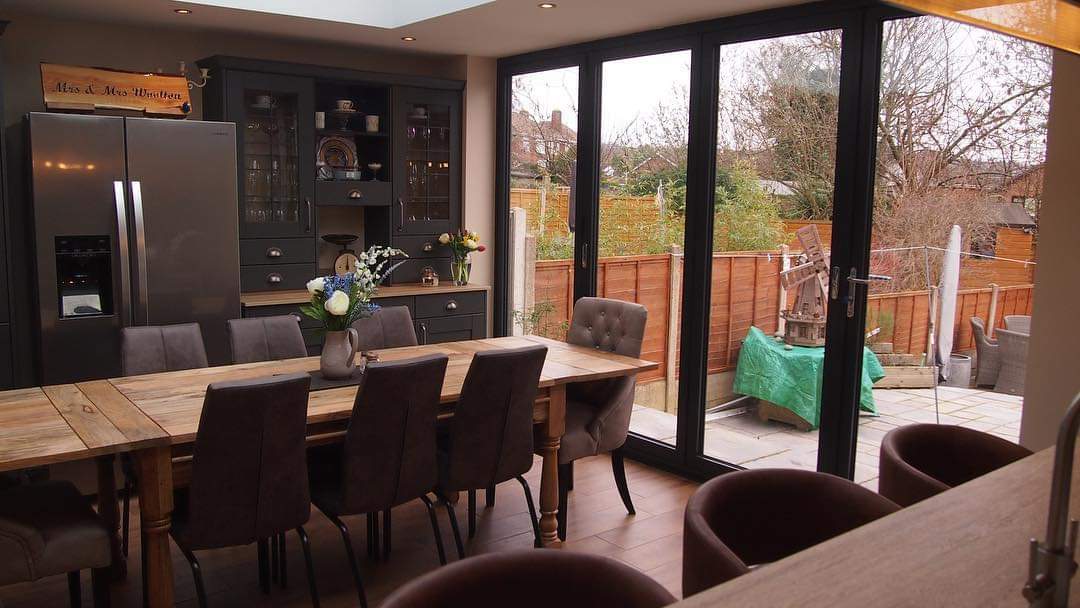About the Act
The Party Wall etc Act 1996
The Party Wall Act was introduced to England and Wales in 1996. It’s purpose was to minimise disputes between neighbouring property owners by ensuring that they use surveyors to determine how and when certain works were carried out.
The Party Wall Act enables building owners to carry out works on and around the boundary line, whilst offering protection to neighbouring owners that may be affected by the works.


What is a Party Wall?
- a wall or structure that is positioned on the land of two or more owners that is part of a building. This may also be a floor/ceiling partition in the case of flats.
- A wall/fence that stands on the land of two or more owners and is not part of a building.
- A wall that is on the land of one owner but is used by other owners to separate their buildings.
Works Covered by the ACt
The Act requires building owners to serve written notice to adjoining owners for the following works;
- Works to an existing party wall structure
- Building on the boundary line
- Excavations within 3 metres or 6 metres of a structure on the adjoining owner’s property.
Once notice has been served, the adjoining owners have 14 days to either consent or dissent to the notice. If the adjoining owners consent, building works can continue as planned. However, if the adjoining owners do not respond or dissent, a dispute is deemed to have arisen. When a dispute arises a Party Wall Surveyor must be appointed.

Frequently Asked Questions
There is a legal requirement upon all building owners (ie. Developers, home owners wanting to carry out an extension to their property) to serve the appropriate Party Wall notices. However, the Act contains no enforcement procedures for failure to serve a notice. If you start work without having first given notice in the proper way, adjoining owners may seek to stop your work through a court injunction or seek other legal redress.
A neighbour cannot stop someone from exercising the rights given to them by the Act, but he can influence how and when the work is done. The Act also says that a building owner must not cause unnecessary inconvenience. The building owner must provide compensation for any damage and must provide temporary protection for buildings and property where necessary.
An adjoining owner is anyone with an interest greater than a tenancy from year to year in the adjoining property. If the next door property is occupied by a long term tenant or leaseholder, it will be necessary to notify the landlord as well. If works fall under the Act, it is your duty to notify all owners of the adjoining property/properties.
It is obviously best to discuss your planned work fully with your neighbours before you (or your professional adviser) give notice in writing about what you plan to do. You should appoint a professional adviser/party wall surveyor to give the notice on your behalf. Whilst there is no official form for giving notice under the Act, your notice must include certain details for it to be valid:
- your own name and address, the building’s address (if different) and a clear statement that your notice is a notice under the provisions of the Act (you should refer to the section(s) concerned)
- full details of what you propose to do (including plans where appropriate) and when you propose to start.
You may deliver the notice in person or send it by post. Where the neighbouring property is empty or the owner is not known, you may address the notice to “the owner” of the premises and fix it to a conspicuous part of the premises. You do not need to tell the local authority about your notice.
A person who receives a notice about intended work may give his consent in writing, or give a counter-notice setting out what additional or modified work he would like to be carried out. A person who receives a notice about intended work, and intends to serve a counter-notice, should let his neighbour know within 14 days.
If, after a period of 14 days from the service of your notice, the person receiving the notice has done nothing, a dispute is deemed to have arisen and you must appoint a Party Wall Surveyor. If you receive a counter-notice you must respond to it within 14 days. If you do not, a dispute is deemed to have arisen, again you must appoint a Party Wall Surveyor.
If the adjoining owners fail to engage or respond to the notices after the expiry of the 14 days, a 10 day letter is then sent to the adjoining neighbours by your surveyor informing them that they are in dissent to the notices and they are required either to consent or appoint a surveyor. Should they further fail to engage or respond a surveyor will be appointed for them. All appointments and responses must be made in writing, verbal consent is not appropriate.
As mentioned before, your notice should not come as a surprise. If you have already ironed out possible snags with your neighbours, this should mean that they will readily appoint an agreed surveyor in response to your notice.
The surveyor (or surveyors) will prepare an “award” (also known as a “party wall award”). This is a document which:
sets out the work that will be carried out and says when and how the work is to be carried out. For example, not at weekends if the buildings are domestic properties.
- records the condition of the adjoining owner’s property before the work begins (so that any damage can be properly attributed and made good)
- allows access for the surveyors to inspect the works while they’re going on (to see that they are in accordance with the award).
It is a good idea to keep a copy of the award with your property deeds.
A Party Wall Award is the result of an adjudication by either an agreed surveyor or two appointed surveyors. The Award is a legally binding document that allows the building owner to undertake works at, or close to, the party wall lawfully whilst safeguarding the rights of the adjoining owner. The party wall award governs how and when the party wall works are to be undertaken, states the precise nature of the party wall works in plain English, and sets in place procedures and obligations to protect both parties from potential damage or claims.
As a part of the party wall award, your party wall surveyors will generally examine and comment upon the drawings for the works. In most cases the party wall surveyors will also attach a ‘schedule of condition’, which is a written report of his survey of the relevant parts of the adjoining owner’s building. The schedule of condition allows the party wall surveyors to return to the adjoining property after completion of the party wall works to verify and record any damage. In the case of damages to an adjoining property, caused by the execution of works, these will also be dealt with by an addendum award (further award) which will award costs and liabilities upon the relevant parties.
Although the party wall surveyor will try to keep the party wall award as simple as possible, it is a formal legal document. If you have difficulty understanding it, one of our specialist party wall advisors will be happy to go through the final party wall award with you to explain what it means.